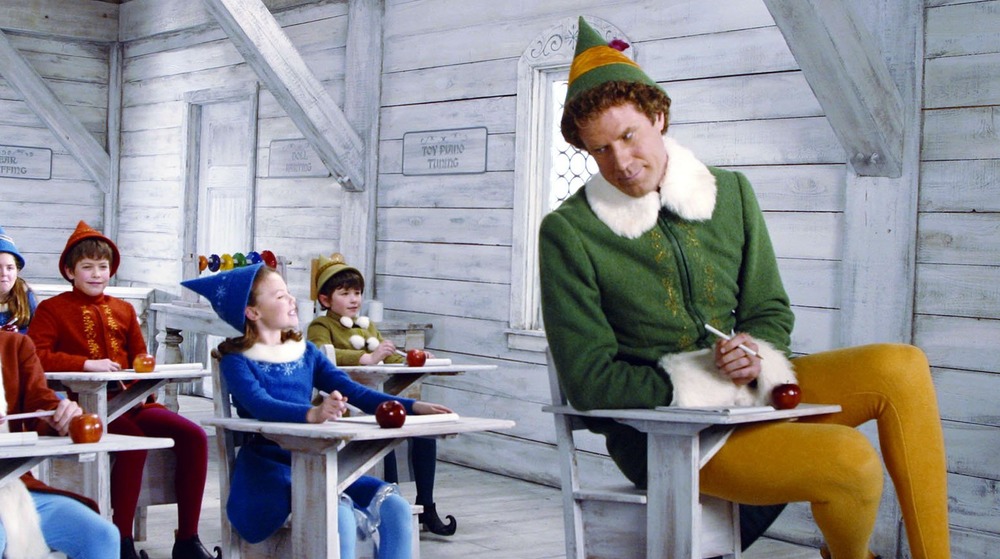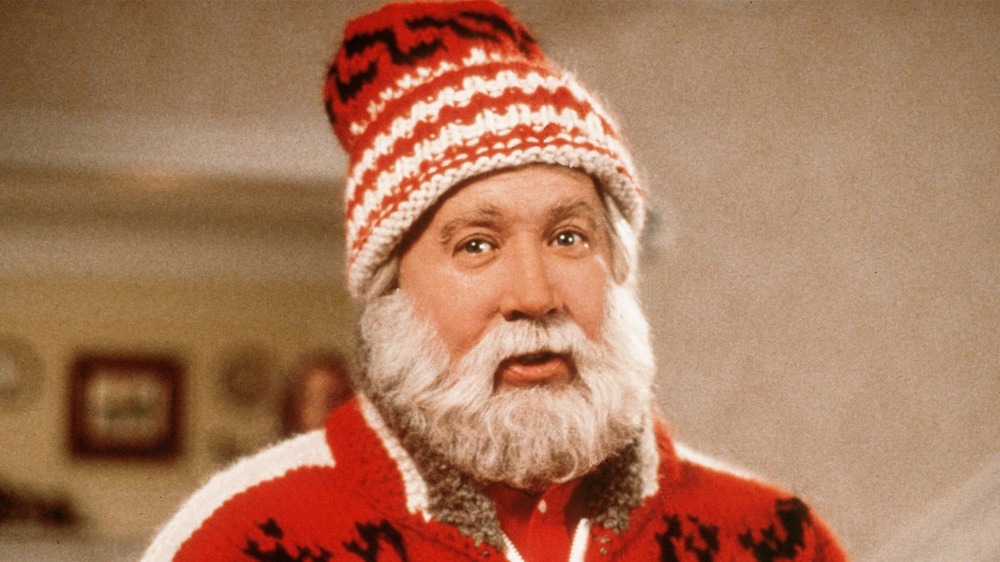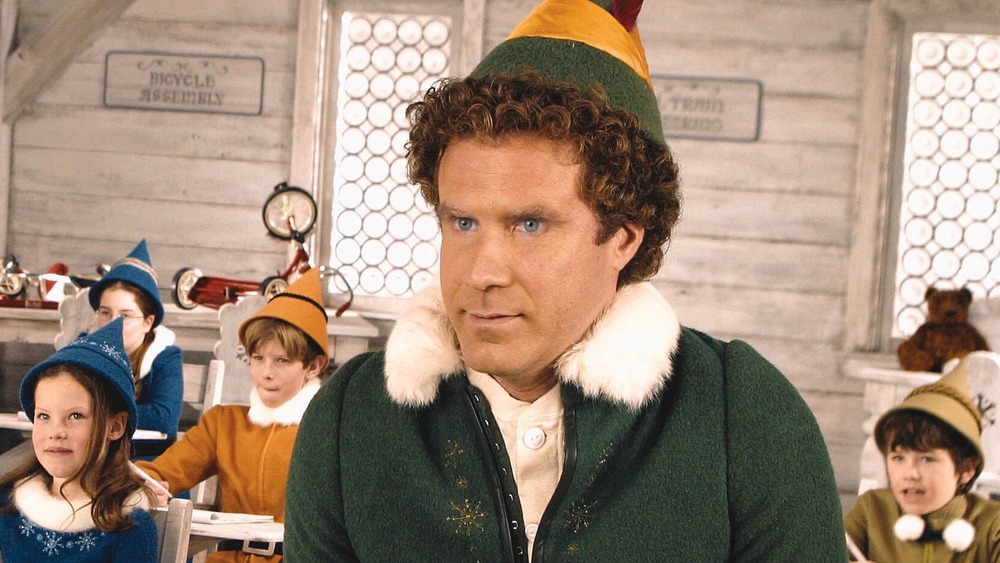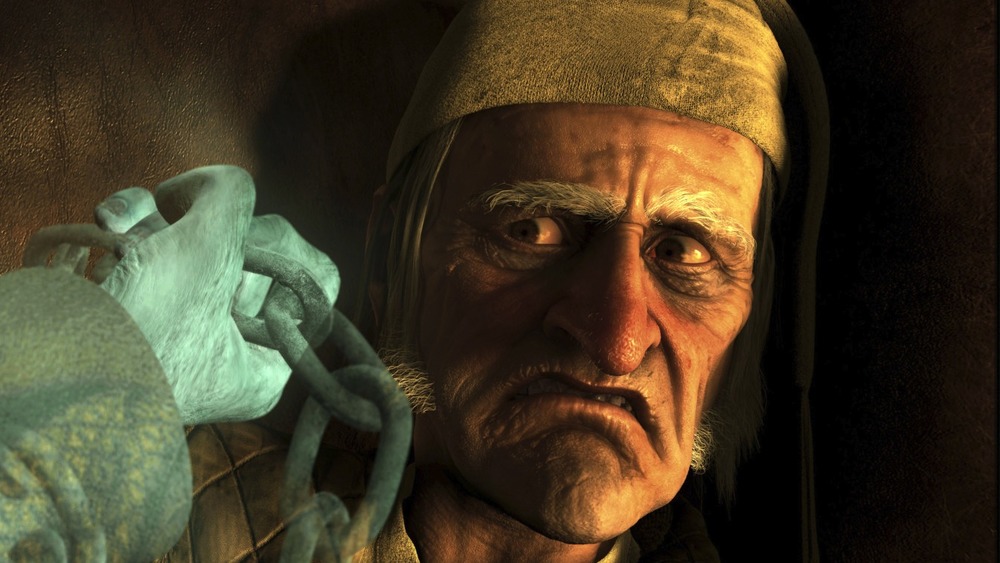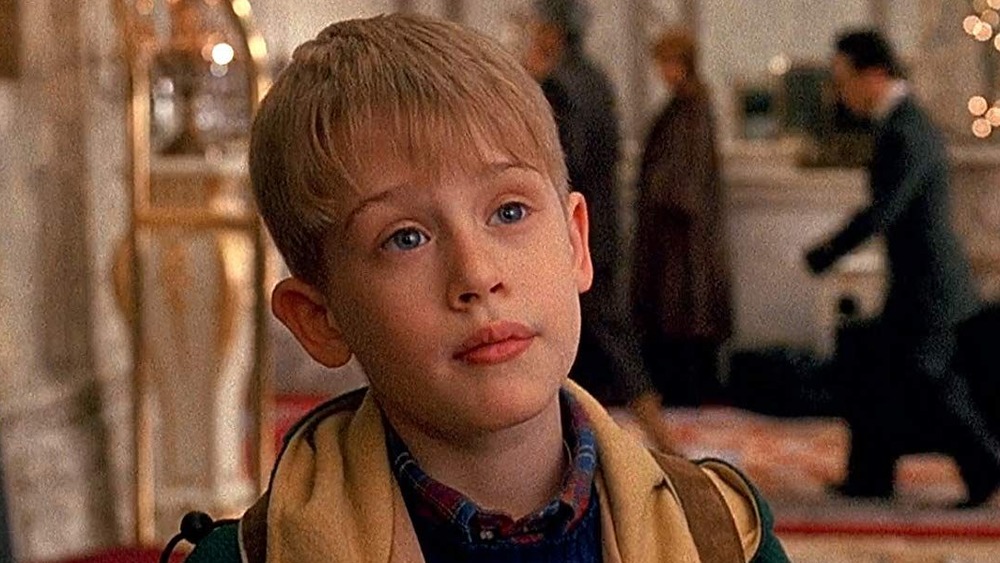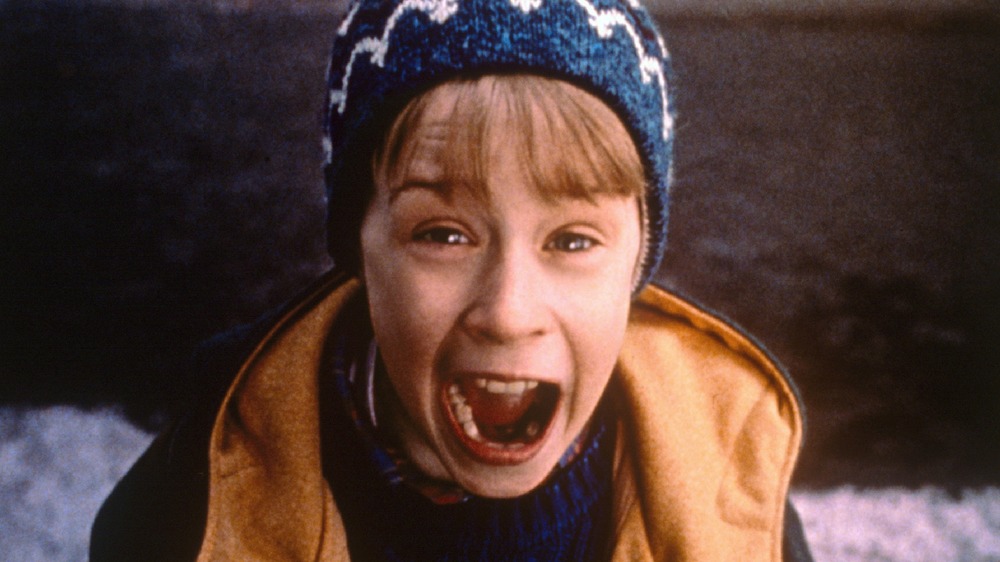The Highest-Grossing Christmas Movies Of All Time
What holiday season would be complete without a few Christmas movies? Even if you don't celebrate Christmas, the likes of It's a Wonderful Life and The Muppet Christmas Carol are bound to make it into your annual December watching. After all, these movies are so good and touching that they transcend the holiday that inspired them. They're just appealing movies, period.
Such universal appeal has certainly helped the biggest Christmas movies of all time at the worldwide box office achieve their financial success. Having their releases timed to directly coincide with the Christmas season also didn't hurt. However, the reasons the likes of Home Alone and How the Grinch Stole Christmas became box office juggernauts go deeper than just those two factors. Many of the highest-grossing Christmas movies excelled due to elements (like a particularly appealing plot or star) that went way beyond just the fact that their individual stories invoked Christmas. Just as Christmas is much more than tinsel on a tree, so too are the reasons behind the box office success of the biggest Christmas movies.
Financially, The Nutcracker and the Four Realms tripped over its own feet
The past Disney hits that The Nutcracker and the Four Realms was trying to emulate were readily apparent from its marketing. The snow-covered fantasy imagery in its posters evoked The Lion, The Witch and the Wardrobe while the costumes plastered all over billboards seemed to have been ported over from Tim Burton's Alice in Wonderland. Unfortunately for The Nutcracker, one place it did not mirror those past Disney movies was in its worldwide box office haul. Coming off the heels off a nearly year-long marketing campaign, Nutcracker debuted in theaters in early November 2018 and subsequently went on to gross $174 million worldwide. On a $122 million budget, that was an underwhelming haul. It was no mystery why Nutcracker came up so severely short financially. For one thing, Nutcracker's release date domestically and in many international territories saw it opening in direct competition against Illumination's animated Grinch movie, a much more broadly appealing holiday film.
Still, there was a silver lining to the Nutcracker's story. Thanks to its fantasy adventure storyline, Nutcracker did manage to have more universal interest across the globe compared to other Christmas movies that fared better domestically like Fred Claus or Four Christmases. While its gross came up short compared to past Disney blockbusters, The Nutcracker and the Four Realms did at least manage to narrowly crack the top ten biggest Christmas movies of all-time worldwide.
Daddy's Home 2 couldn't live up to its predecessor at the box office
Comedy sequels are a precarious game when it comes to box office. For every The Hangover: Part II that improves upon the grosses of its predecessor, there are far more films like Horrible Bosses 2 and Neighbors 2: Sorority Rising that fall far short of their predecessors. Daddy's Home 2 was no exception to the latter phenomenon. Debuting in November 2017, Daddy's Home 2 came up $60 million shy of the worldwide gross of the original Daddy's Home from 2015.
While it was lower than its predecessor, Daddy's Home 2's $180.6 million worldwide haul wasn't too shabby for a movie that cost $70 million to make. To boot, its $76.6 million overseas gross was higher than the foreign box office hauls of past Will Ferrell comedies like Anchorman 2 ($46.6 million) and The Other Guys ($51.2 million). As for why Daddy's Home 2 wasn't as lucrative as the original sleeper hit movie, it may be as simple as the fact that the novelty of seeing Will Ferrell and Mark Wahlberg reunite for a comedy had worn off. Adding Christmas as the backdrop, thus making it timely viewing when it was released, likely helped to stop the financial bleeding here. In the process of tying itself to the holidays, Daddy's Home 2 was saved from having as sharp of a box office drop from its predecessor as the likes of Neighbors 2.
The Santa Clause was very much on the nice list with its box office haul
Disney has put their own stamp on too many famous kid-friendly public domain characters to count. Cinderella. Snow White. Rapunzel. It was only a matter of time before they took the same approach with the one and only Santa Claus. Disney tackled their own version of the big man in the red suit in a 1994 live-action movie entitled The Santa Clause. Tim Allen, star of the then-brand new sitcom Home Improvement, took on his first feature film lead role as a guy who gradually begins to transform into Santa after inadvertently killing the holiday icon. It was a unique premise that managed to whip up a hearty $190.3 million at the worldwide box office. The films $144.3 million domestic haul put it ahead of all but three movies in 1994 while its worldwide gross still made it the twelfth-biggest movie of the year.
Santa Clause is an enduringly popular character. However, as the 1985 flop Santa Claus: The Movie proved, you can't just slap the character on a movie poster and expect a hit. Disney's The Santa Clause overcame this potential problem by not just resting its laurels on Santa. Instead, the marketing emphasized the presence of Allen and the comedy stemming from a normal guy taking on behaviors and physical characteristics related to Santa. The result was a movie that still stands as Allen's biggest non-Wild Hogs movie among his live-action films.
Elf spread Christmas cheer all around the world
After nearly twenty years of being a holiday season staple, Elf has become one of the most recognizable Christmas movies of all-time. Elf didn't just obtain this level of ubiquity in the world of home video, though. This feat was initially reflected in the film's box office gross, which proved to be truly impressive, particularly considering how much competition it was up against. Elf was released in November 2003 as an original family-friendly title going up against a swarm of sequels and adaptations. The Cat in the Hat, The Haunted Mansion and Looney Tunes: Back in Action all opened directly after Elf and seemed poised to steal its box office thunder.
But Buddy the Elf turned out to be a resilient elf, with Elf's $211 million worldwide gross far exceeding all but one of the other kid's movies released in November 2003 (Brother Bear being the lone exception). The box office accomplishments of Elf go beyond just how it fared compared to other November 2003 movies though. Ferrell has gone on to star in nearly two decades worth of comedy vehicles after Elf, but the film is still his second-highest grossing live-action movie worldwide, behind only the $242.8 million box office gross of Daddy's Home. With such lucrative success at the box office, no wonder Elf has been able to endure as a Christmastime fixture.
Moviegoers chose to take a ride on The Polar Express
In the years since its 2004 release, The Polar Express has not generated the most positive reputation online. Articles with headlines like The Polar Express Broke Me and jokes about the dead-looking eyes of the film's motion-capture animated characters are rampant. General moviegoers, meanwhile, were more receptive to The Polar Express, even if its massive budget made it difficult to call it a hit.
Dropping in early November 2004, The Polar Express grossed $23.3 million on its domestic opening weekend. This debut came in under expectations considering the movie's massive $165 million budget. If Elf and Home Alone have proven anything, it's that lower budgets are better for Christmas fare given their limited appeal internationally. Hot off its opening, a Los Angeles Times piece examining its box office shortcomings included a quote from a rival studio executive labeling the box office performance "a disaster."
Luckily for The Polar Express, the film held on spectacularly well in the following weeks as Christmas drew closer and closer, eventually securing a worldwide box office gross of $286 million. While still not profitable on that $165 million budget, Polar Express has proven to be an enduringly lucrative title for Warner Bros. Since 2004, annual theatrical re-releases across the world have brought its worldwide gross up to $313 million. Though still not as big as WB likely hoped, The Polar Express has managed to avoid going totally off the rails, at least financially.
A Christmas Carol's budget kept it from being a hit
Both director Robert Zemeckis and comedy star Jim Carrey made their second forays (following The Polar Express and How the Grinch Stole Christmas, respectively) into holiday movies with a 2009 adaptation of A Christmas Carol. Thanks to the magic of motion-capture animation, Carrey was able to inhabit numerous iconic characters from the classic Charles Dickens story, including Ebenezer Scrooge and the three ghosts that teach him valuable life lessons.
This unique approach to this seminal Yuletide tale had Disney (who financed A Christmas Carol) hoping for a box office gross that would exceed Zemeckis and Carrey's prior Christmas-themed adventures. In the end, A Christmas Carol grossed $315 million at the worldwide box office, enough to make it the biggest non-Grinch and non-Home Alone Christmas movie of all-time. However, it failed to come close to matching prior Carrey and Zemeckis fare at the domestic box office. Far more troubling, though, was the fact that A Christmas Carol cost a massive $200 million to make. That ensured that its $315 million worldwide sum wasn't profitable for distributor Disney.
The studio responded by abandoning plans to make further motion-capture animated movies with Zemeckis. The filmmaker, meanwhile, returned to live-action cinema with his follow-up directorial effort Flight. Though it was bigger than many Christmas films, the ripple effects of A Christmas Carol reflect how it failed to have a holly jolly ending at the worldwide box office.
How the Grinch Stole Christmas and dominated the box office
In the modern era of big-screen comedies, where titles struggle to hit $100 million domestically, Jim Carrey's box office prowess feels like something from an entirely different universe. The likes of Liar, Liar and Bruce Almighty had box office hauls reminiscent of your average Marvel movie, not a laughfest. But one of Carrey's biggest titles didn't just score box office success based on the comedian's name alone. Carrey's box office appeal combined with the enduring fame of the works of Dr. Seuss to yield the 2000 blockbuster How the Grinch Stole Christmas.
Arriving as the first live-action film adaptation of a Dr. Seuss book, Grinch managed to bring in $345.5 million worldwide over the course of its box office life. A whopping $260 million of that came from its domestic run. That haul made Grinch the biggest Carrey vehicle domestically and also the highest-grossing movie of 2000 at the North American box office. The fact that Seuss books aren't as beloved internationally as they are domestically meant Grinch wasn't quite as massive overseas as past Carrey vehicles like The Mask. But with that gargantuan domestic take and a budget of $123 million, all overseas grosses were just gravy for Grinch. The film was an enormously profitable enterprise that didn't just pave the way for future film adaptations of Dr. Seuss titles. It also cemented Carrey's status as a comedic box office draw like no other.
Home Alone 2: Lost in New York found $359 million worldwide
The trend of comedy sequels failing to match the grosses of their predecessors is such a common phenomenon that it even befell a kid who managed to outwit the Wet Bandits. Home Alone 2: Lost in New York grossed $359 million worldwide, nearly $120 million less than its predecessor. Much of that drop can be attributed to its domestic gross, which was $173.3 million, a $112 million plummet from the domestic haul of the original Home Alone. The overseas gross, meanwhile, remained nearly identical, with Lost in New York grossing $186 million versus the $190 million Home Alone generated internationally.
Among the factors impacting Lost in New York was scheduling. The original Home Alone wiped out any competing family movies in its 1990 box office run. The likes of The Rescuers Down Under provided no challenge for Kevin McAllister and the Wet Bandits. By contrast, Home Alone 2 faced a lot stiffer competition in its holiday season 1992 release, particularly from the animated Disney movie Aladdin. More pressingly, the original Home Alone was a word-of-mouth sensation that turned a $17 million domestic opening weekend into a $285.8 million domestic run. By contrast, Home Alone 2 followed a more traditional box office path with a big opening and more standard weekend-to-weekend drops.
Considering its $28 million budget, though, Home Alone 2: Lost in New York coming in below the original Home Alone was immaterial, and the project was still wildly profitable.
Home Alone raised the bar for Christmas movies at the box office
When it comes to live-action family movies, there was before Home Alone and there was after Home Alone. It's no exaggeration to say that about this Yuletide Macaulay Culkin vehicle. Its impact on family movies in the 1990s was undeniable. Subsequent projects like Mouse Hunt and Baby's Day Out began emphasizing slapstick antics and stories about mischievous youthful protagonists being pitted against cantankerous adults in the hopes of recapturing the Home Alone magic. Why were they so determined to do this? Because Home Alone was a massive success, grossing $476.7 million worldwide.
Home Alone was so big that, unlike normal Christmas movies, its lucrative box office didn't end once December 25 came and went. Home Alone was still atop the domestic box office in mid-January, its ninth weekend of release. It eventually dominated the domestic box office for twelve weekends while its box office total made it, at the time, the third-biggest movie of all-time. A movie's success can come down to it simply being an appealing enterprise for audiences of all ages. The heart and slapstick comedy of Home Alone proved engaging to kids and adults alike around the world. Sometimes that's all you need for a hit, especially when it ties into the holiday season.
Considering its box office achievements and enduring widespread appeal, is it any wonder so many subsequent family movies would try and take creative cues from Home Alone?
Illumination's The Grinch rounded up $511 million worldwide
Neither Dr. Seuss movies nor Christmas movies have a great international box office track record. For example, Illumination Entertainment's original foray into Dr. Seuss movies, The Lorax, grossed just $134.8 million overseas. This trend got upended with Illumination's 2018 animated film The Grinch, which grossed a massive $511 million worldwide. Whereas the live-action Grinch movie had made a measly $85 million overseas, the animated Grinch made a whopping $241.1 million abroad, nearly matching the feature's domestic total of $270.6 million.
This box office run was thoroughly impressive on numerous levels. For one thing, Illumination's The Grinch is the largest Christmas movie of all time worldwide and the first Christmas movie to crack $500 million around the globe. For another, it demonstrated the amount of goodwill Illumination had built up with audiences at that point. The studio behind Despicable Me and The Secret Life of Pets has produced a large number of massive worldwide hits, enough so that just their name can get the attention of moviegoers. This helped ensure that The Grinch didn't just register as a Christmas movie or Dr. Seuss adaptation to moviegoers around the world. It was simply the newest animated comedy from the Minions people. Combining all that brand-name goodwill with the fact that the original Dr. Seuss Grinch book is still so beloved meant that The Grinch had a very merry run at the box office.
